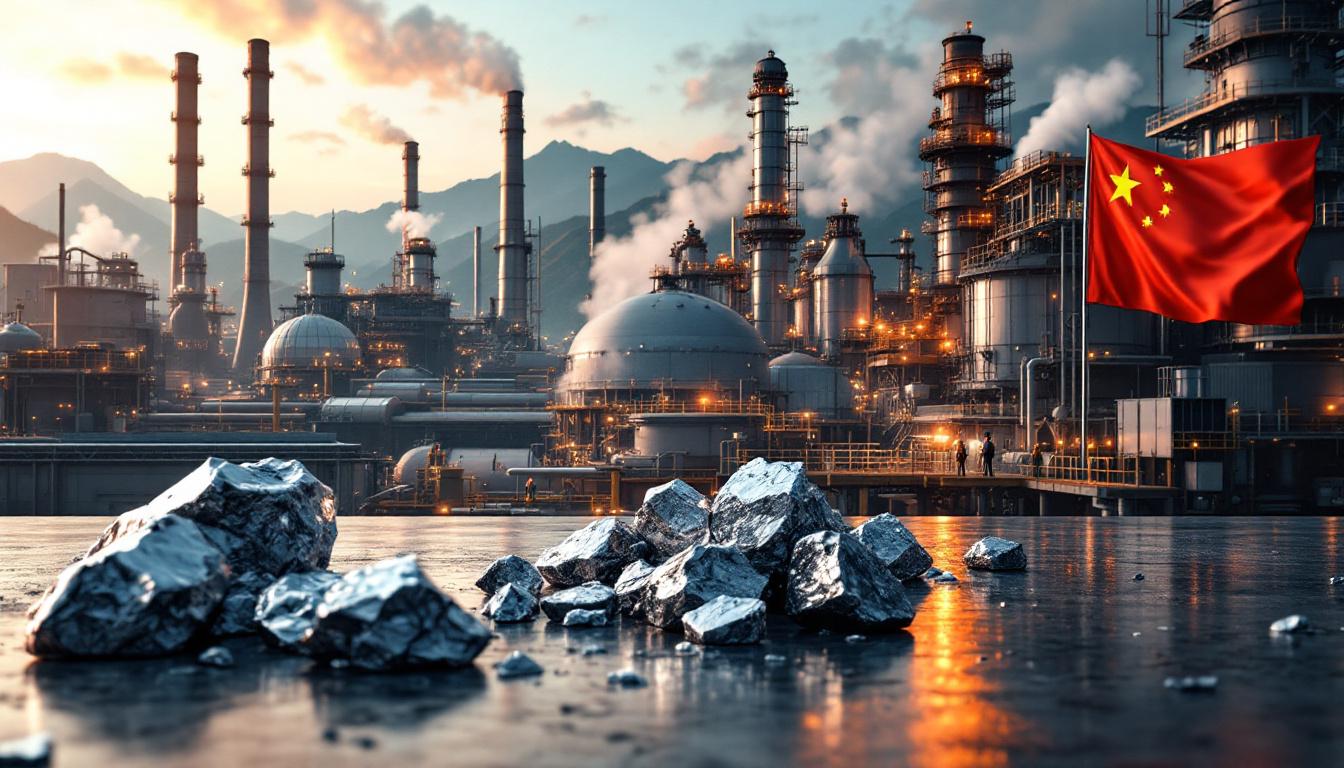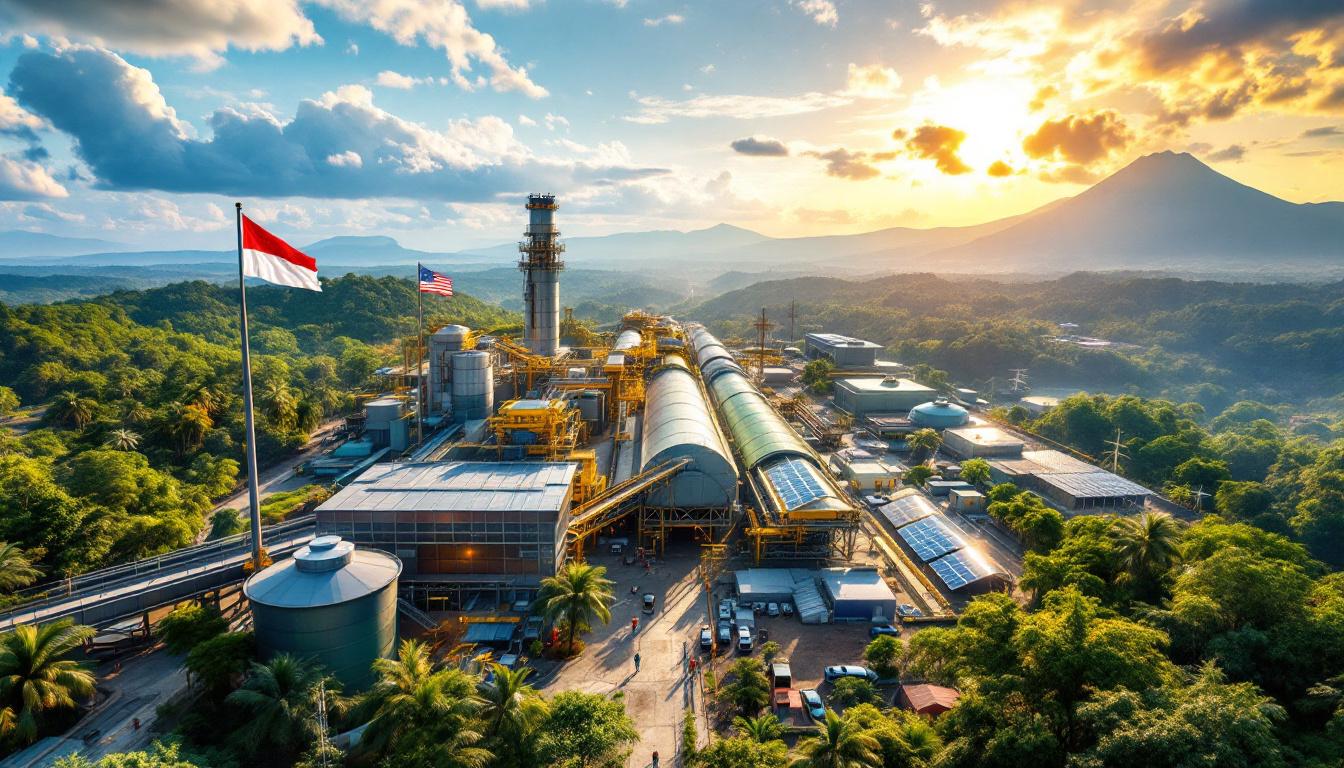What is the Current State of the Secondary Aluminum Industry?
The secondary aluminum industry continues to navigate challenging conditions as we move into the summer of 2025. According to the latest Shanghai Metals Market (SMM) data, the industry's Purchasing Managers' Index (PMI) of the secondary aluminum industry in June registered at 45.0%, showing a slight month-on-month improvement from May's figures but remaining firmly below the critical 50-point threshold that separates expansion from contraction.
This marks the fourth consecutive month in contraction territory, indicating persistent structural weakness across the recycled aluminum sector. While the marginal improvement offers a glimmer of hope, industry analysts remain cautious about interpreting this uptick as the beginning of a sustainable recovery.
"The secondary aluminum sector continues to face headwinds from both supply-side cost pressures and tepid downstream demand, creating a challenging operational environment despite modest PMI improvements," notes SMM's June industry analysis.
The contraction pattern is particularly concerning given that summer months traditionally show stronger demand patterns. Production activity remains subdued, with many manufacturers reporting underutilization of capacity and selective operational schedules to manage costs against weak order volumes.
Key PMI Indicators for June 2025
- Overall PMI: 45.0% (up slightly from May's 44.2%)
- New Orders Index: 43.7% (showing continued but slowing contraction)
- Production Index: 46.1% (marginally improved but still contracting)
- Employment Index: 42.3% (indicating continued workforce reductions)
- Raw Materials Inventory: 48.9% (approaching stabilization but still declining)
When examining the sub-indices, the production component shows the strongest relative performance, though still contracting. This suggests that while manufacturers are maintaining some output levels, they're doing so primarily to fulfill existing orders rather than in anticipation of new business.
How Are Aluminum Alloy Prices Performing?
The secondary aluminum market has experienced modest price increases in recent weeks, primarily driven by cost-push factors rather than demand-pull dynamics. This price movement illustrates the complex interplay between raw material costs and end-user demand that characterizes the current market.
Current Price Movements
According to SMM data, cast aluminum alloy prices showed measurable gains in late June, with ADC12 prices increasing by 100 yuan/mt to reach 20,000-20,200 yuan/mt. This movement represents a 0.5% increase but comes against a backdrop of lackluster transaction volumes.
"The price increase we're seeing is almost entirely cost-driven rather than demand-pulled," explains an SMM analyst. "Primary aluminum's price surge is forcing secondary producers to adjust upward despite the weak consumption environment."
Industry observers note that price negotiations have become increasingly challenging, with producers attempting to pass through rising input costs while consumers resist price hikes amid tight budgets and uncertain demand outlooks for their own products.
Price Support Factors
Several key factors are providing upward pressure on secondary aluminum prices:
- Primary Aluminum Costs: SMM A00 aluminum spot prices surged 280 yuan/mt to close at 20,890 yuan/mt on June 27, creating immediate upstream cost pressure
- Energy Expenses: Power costs remain elevated across key production regions, adding to overall production expenses
- Aluminum Scrap Trends: Various scrap categories experienced notable price increases:
- Baled UBC and shredded aluminum tense scrap: Up 100 yuan/mt
- Wrought aluminum alloy scrap and clean tapping aluminum wire: Up 200 yuan/mt
The differential increase in scrap prices reflects varying supply constraints across different scrap categories. Wrought aluminum scrap has experienced tighter availability due to reduced manufacturing activity in the construction and automotive sectors, leading to the more pronounced price increase of 200 yuan/mt compared to UBC's 100 yuan/mt rise.
Price Differential Analysis
Price differentials between various aluminum products provide insight into market dynamics and potential arbitrage opportunities:
| Material Comparison | Price Differential | Change |
|---|---|---|
| Mechanical casting aluminum scrap vs. A00 aluminum (Shanghai) | 1,848 yuan/mt | +8 yuan/mt |
| Green extrusion vs. A00 aluminum (Foshan) | 1,738 yuan/mt | +180 yuan/mt |
These expanding differentials suggest growing tension between raw material costs and finished product prices. Notably, the green extrusion differential expanded significantly more than mechanical casting scrap, indicating potential supply constraints in the extrusion segment or stronger relative demand.
What's Happening in the Futures Market?
The futures market for cast aluminum alloy has shown remarkable stability despite the movement in physical markets, reflecting investor uncertainty about medium-term price directions. This stability contrasts with the more volatile spot market and provides important signals about market sentiment.
According to SMM data, the most-traded AD2511 futures contract opened higher at 19,835 yuan/mt but ultimately closed at 19,785 yuan/mt, representing a minimal decrease of 5 yuan/mt (0.03%) from the previous trading day. This sideways movement occurred despite spot price increases, suggesting investors remain cautious about the sustainability of current price levels.
"The futures market is sending a clear signal that participants see limited upside potential in the near term," notes a veteran metals trader. "The disconnect between spot and futures performance indicates the market is pricing in potential demand weakness in the coming months."
Futures Market Metrics
A closer examination of trading patterns reveals important insights:
- Trading volume: 841 lots (down 12% from the previous week's average)
- Open interest: 8,247 lots (with bears increasing positions)
- Market positioning: Institutional investors maintaining cautious stance
- Basis (theoretical premium of spot over futures): Narrowed to 280 yuan/mt
The narrowing basis (the spread between spot and futures prices) indicates expectations that spot prices may align more closely with futures in the coming trading sessions. Historically, when the basis narrows during rising spot prices, it often suggests the spot market may soon face resistance.
The positioning data showing bears increasing their holdings further supports the cautious outlook, with market participants potentially anticipating price corrections as seasonal demand patterns shift heading into July.
How Are Inventory Levels Affecting the Market?
Inventory management has become increasingly challenging for industry participants as stocks continue to accumulate amid persistent demand weakness. This inventory buildup represents one of the most significant headwinds for price stability in the secondary aluminum market.
According to SMM statistics, the daily social inventory of secondary aluminum alloy ingots across key markets (Foshan, Ningbo, and Wuxi) reached 19,523 mt on June 27, representing an increase of 236 mt (1.2%) from the previous trading day. More concerning is the month-over-month increase of approximately 8.5%, suggesting accelerating inventory accumulation.
"The inventory situation is becoming increasingly problematic for price stability," explains an SMM analyst. "When we see consistent inventory builds during what should be a seasonally strong period, it raises significant concerns about underlying demand fundamentals."
Inventory Impact Analysis
The current inventory situation is influencing market dynamics in several ways:
- Price Pressure: Rising inventories place downward pressure on spot prices, offsetting some of the upward momentum from cost increases
- Cash Flow Challenges: Extended inventory holding periods strain working capital for traders and distributors
- Regional Variations: While the inventory pattern is broadly similar across major trading hubs, Ningbo has seen a slightly higher accumulation rate at 1.5% daily
- Historical Context: Current inventory levels are approximately 22% higher than the same period in 2024, indicating a fundamental shift in market balance
The inventory situation is particularly challenging because it's occurring despite production discipline from many secondary aluminum producers, who have already reduced utilization rates to manage oversupply conditions.
What Are the International Market Dynamics?
The global secondary aluminum market presents a complex picture with regional pricing disparities creating both challenges and opportunities for market participants. For Chinese importers, the current international price structure continues to create unfavorable economics despite recent adjustments.
Global Price Indicators
Key international price benchmarks show modest upward movement:
- CIF import price of ADC12: Increased to $2,450-2,470/mt (up from $2,430-2,450/mt in late May)
- Import spot price: Rose by 100 yuan/mt to approximately 19,300 yuan/mt
- Import loss range: 700-800 yuan/mt (improved from 850-950 yuan/mt in early June)
- Thailand local tax-excluded ADC12 price: 82-83 Thai baht/kg (equivalent to approximately $2,350-2,380/mt)
The persistence of import losses highlights the challenging economics for Chinese importers and explains the reduced import volumes observed in recent months. Despite improving slightly, the 700-800 yuan/mt loss range remains prohibitive for most commercial operations.
"International price dynamics continue to favor domestic supply chains," notes an SMM market analyst. "With freight rates remaining elevated and global premium structures in flux, the tariff impact analysis remains firmly closed."
The Thailand price benchmark is particularly significant as Southeast Asian producers have historically been major suppliers to the Chinese market when arbitrage windows open. The current price level of 82-83 Thai baht/kg represents a 3.8% increase since early June but remains insufficient to overcome the import economics challenge.
What Factors Are Influencing Supply and Demand?
The secondary aluminum market continues to face complex cross-currents affecting both supply and demand sides of the equation. Understanding these factors is crucial for anticipating market movements in the coming months.
Supply-Side Factors
Several key elements are shaping the supply landscape:
-
Raw Material Costs: Rising aluminum prices are increasing production costs and squeezing margins for secondary producers. Primary aluminum spot prices have surged 280 yuan/mt, closing at 20,890 yuan/mt, creating immediate upstream pressure.
-
Supplier Behavior: Aluminum scrap suppliers are adopting increasingly cautious wait-and-see attitudes as market uncertainty persists. Many are holding inventory in anticipation of further price increases, limiting immediate availability.
-
Production Adjustments: SMM surveys indicate approximately 15% of secondary aluminum producers have implemented partial production cuts to manage costs and inventory levels. Average capacity utilization has declined to approximately 72%, down from 81% in April.
-
Energy and Environmental Factors: Ongoing environmental inspections in key production regions are creating operational constraints for some producers, particularly smaller operations with less advanced emission control systems.
Demand-Side Challenges
Consumption patterns remain problematic across several dimensions:
-
Downstream Procurement: Enterprises are maintaining strict just-in-time purchasing strategies, limiting advance orders and focusing on immediate needs. This pattern creates volatility in order flow and complicates production planning.
-
Seasonal Factors: July typically represents an off-season period for aluminum consumption in several key sectors. Historical patterns suggest a 5-8% reduction in consumption from June to July, creating additional headwinds.
-
Terminal Orders: Key end-use sectors including automotive and consumer electronics show no signs of order growth, with several major consumers reporting inventory destocking initiatives that reduce immediate material requirements.
-
Consumption Patterns: Overall consumption trends remain subdued across most application categories. Construction-related consumption has been particularly weak, with residential construction starts down approximately 12% year-over-year.
The combined effect of these supply and demand factors creates a challenging operational environment for market participants. While cost pressures support prices from below, demand weakness limits upside potential, creating the range-bound market conditions currently observed.
What's the Short-Term Market Outlook?
The secondary aluminum market is expected to maintain a narrow rangebound fluctuation pattern in the near term, as opposing forces create a balanced but constrained trading environment. This outlook reflects the complex interplay of cost support and demand weakness.
Limiting Factors for Price Increases
Several elements will likely cap upside potential in the coming weeks:
- Persistent weak demand from downstream industries continues to limit transaction volumes, with many buyers resisting price increases
- Seasonal slowdown in July historically reduces consumption by 5-8% from June levels
- Lack of growth in terminal orders provides limited visibility for sustained demand recovery
- Rising inventory levels create a supply overhang that pressures spot prices
"The combination of seasonal patterns and structural demand weakness creates significant resistance for any sustained price rally," explains an SMM analyst. "While producers continue pushing for higher prices to cover increasing costs, buyer resistance remains strong."
Supporting Factors for Price Stability
Despite the challenging demand environment, several factors provide price support:
- Strong cost support from rising primary aluminum prices creates a production cost floor
- Increased aluminum scrap costs limit the potential for significant price declines
- Production discipline among secondary producers helps manage market balance
- Limited downside potential due to production cost considerations, with current prices already near breakeven for some producers
Industry experts note that the breakeven point for efficient secondary aluminum producers is approximately 19,500-19,800 yuan/mt under current cost structures, providing significant support against potential price declines.
Expert Market Projection
The balance of factors suggests the ADC12 market will likely maintain a trading range of 19,800-20,400 yuan/mt in the near term. Upside potential appears limited given demand constraints, while downside risk is mitigated by strong cost support.
"We're in a classic cost-push environment with limited demand-pull," observes a senior trader. "This typically results in range-bound trading until a significant shift occurs in either production costs or end-user demand patterns."
Market participants should closely monitor inventory trends and oil price movements as potential catalysts for breaking out of the current range. Any significant change in either factor could alter the delicate balance currently maintaining price stability.
FAQ About the Secondary Aluminum Industry
What is the PMI and why is it important for the aluminum industry?
The Purchasing Managers' Index (PMI) is a critical economic indicator that measures the economic health of the manufacturing sector. For the aluminum industry, a PMI reading above 50 indicates expansion, while below 50 signals contraction.
The PMI of the secondary aluminum industry in June reading of 45.0% indicates that secondary aluminum producers are experiencing declining business activity, which typically correlates with reduced production, lower new orders, and potential inventory adjustments.
PMI is particularly valuable because it serves as a leading indicator, often signaling changes in industrial activity before they appear in traditional economic data. The five principal components of the PMI are new orders, inventory levels, production, supplier deliveries, and employment – providing a comprehensive picture of operational conditions.
How does the secondary aluminum market relate to the primary aluminum market?
The secondary aluminum market (recycled aluminum) is closely tied to primary aluminum prices as they represent alternative supply sources. When primary aluminum prices rise, as seen with the 280 yuan/mt increase to 20,890 yuan/mt, it typically pulls secondary aluminum prices higher as well.
However, the relationship isn't perfectly correlated, as evidenced by the price differentials between various aluminum scrap types and primary aluminum. Several factors influence this relationship:
- Energy intensity: Primary aluminum production requires approximately 95% more energy than secondary production, making primary prices more sensitive to energy cost fluctuations
- Raw material differences: Primary production depends on bauxite and alumina pricing, while secondary production relies on scrap availability and pricing
- Environmental considerations: Secondary aluminum typically has a significantly lower carbon footprint, which is becoming increasingly important in green metals leadership
- Application overlap: While some applications can use either primary or secondary aluminum, others have specific requirements that limit substitution
This complex relationship creates both opportunities and challenges for market participants navigating the pricing landscape.
What is ADC12 and why is it a benchmark for the secondary aluminum market?
ADC12 is a standard aluminum die-casting alloy widely used in automotive components, electronics housings, and various industrial applications. It contains approximately 10-12% silicon and other elements like copper and iron.
As one of the most commonly traded secondary aluminum alloys, ADC12 serves as a benchmark for pricing and market conditions in the recycled aluminum industry for several reasons:
- Volume: It represents the largest trading volume among secondary aluminum alloys
- Standardization: Its composition is tightly specified and internationally recognized
- Application breadth: It's used across multiple industries, providing broad market representation
- Liquidity: It has the most active spot and futures markets among secondary alloys
The technical specifications for ADC12 include silicon (9.6-12.0%), copper (1.5-3.5%), iron (≤1.3%), zinc (≤1.0%), and aluminum (remainder). This composition provides excellent fluidity, good corrosion resistance, and suitable mechanical properties for die-casting applications.
Further Exploration:
Readers interested in learning more about trends in the secondary aluminum market can explore these additional resources:
- SMM Aluminum Industry Chain Database: Provides comprehensive historical price data and analysis
- China Nonferrous Metals Industry Association: Offers industry reports and policy updates
- International Aluminium Institute: Publishes global production and consumption statistics
- Commodity price forecast: Covers broader market trends affecting aluminum pricing
Understanding the secondary aluminum market requires monitoring both upstream factors (primary aluminum and scrap prices) and downstream demand drivers (automotive, construction, and consumer goods production). This interconnected approach provides the most complete picture of market dynamics and [commodity trading outlook](https://discoveryalert.com.au/news/commodity-trading-
Interested in Spotting Early Signs of Commodity Market Shifts?
Discovery Alert's proprietary Discovery IQ model provides instant notifications on significant ASX mineral discoveries, helping investors identify actionable opportunities before the broader market. Visit our discoveries page to see how major mineral findings can generate substantial returns and start your 30-day free trial today.




